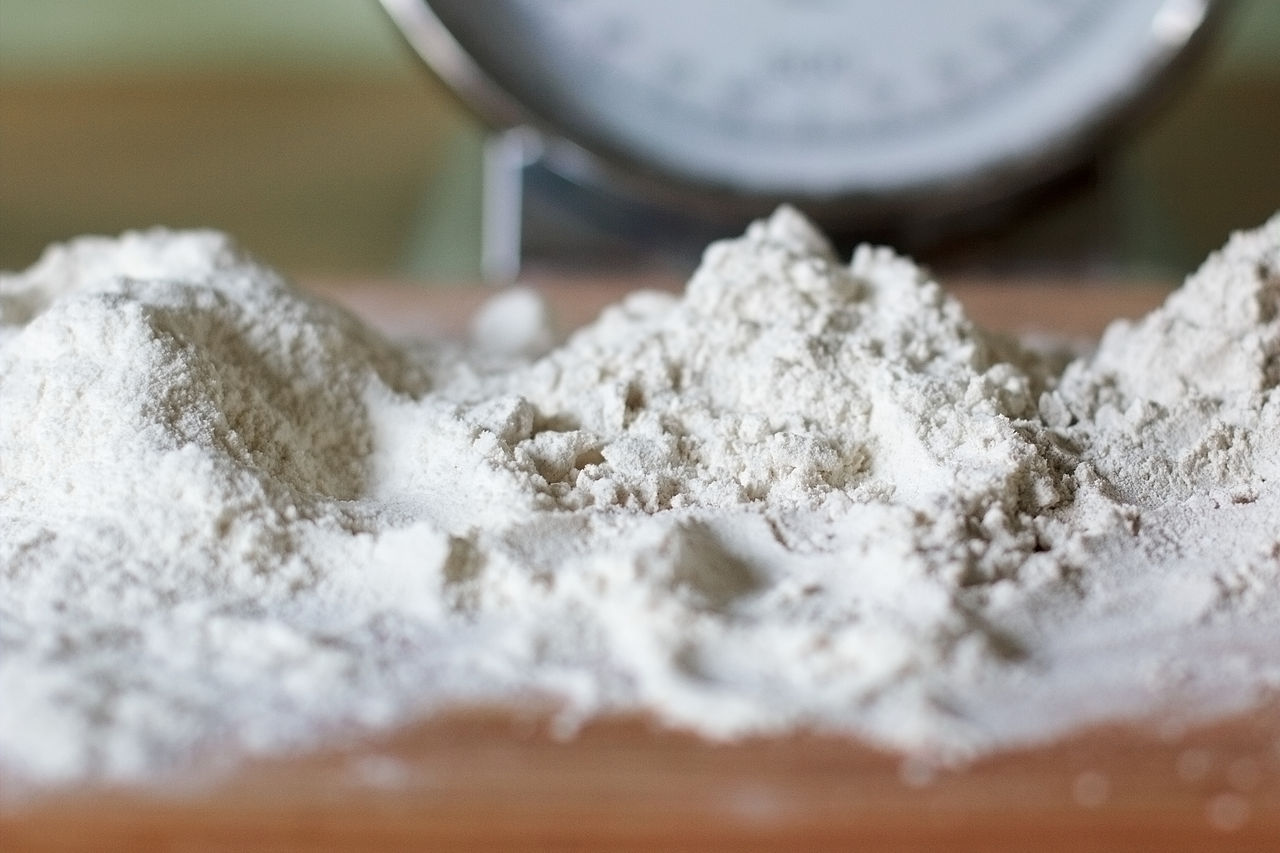By Nathan Chambers, Recent Arizona State University Nutrition Student
If you’re anything like me, you love to create and then eat all manner of baked goods. Who doesn’t love warm banana bread just out of the oven and smothered in rich, melty butter? Or fresh peach pie with a homemade, hand-rolled crust?
And, if you’re like me, you might take a bigger slice than is your due.
What if I told you that there is a simple way to make your delicious baked goods healthier?

Don’t get me wrong. Your double chocolate cake is still going to be a sugary sinkhole of unnecessary calories, but indulging occasionally is just fine!
The problem with our homemade baked goods is not only that they contain massive amounts of sugar and fat, but by using refined white flour we are removing every trace of nutrition that could be had from our sweets.
Refined white flour
Refined flours are heavily processed flours. The processing of wheat will remove the bran and thus eliminate fiber. Fiber is one of the pieces of the nutritional puzzle, and as Americans it is a piece that is often being left out.
Refined white flour also loses many vitamins that come with whole grains–namely B vitamins. And finally, refined flour has a higher glycemic index than does whole grain flour, thus affecting your blood sugar levels and potentially contributing to metabolic syndrome.
There are many substitutes for ‘all-purpose white flour’, many of which can add a new flavor element and enhance your baked goods. When baking with substitutes, especially if your recipe calls for white flour, there are just a few things you’ll have to tweak… in many cases this might mean increasing the amount of liquid in your recipe.
Whole grain flour
Baking with whole grain flour is the simplest way to change the type of flour you’re using. It is easily attainable, contains more fiber (up to 5 added grams per ½ cup!), a higher vitamin content, more antioxidants, and whole grain flour requires little alteration to your recipe.
The biggest difference in baking with whole grain flours is the soaking process. Just like beans, it is good to soak your grains overnight before you use them. This is not a complicated process; it just takes a few minutes of preparation and a little foresight.
Another option for using whole grain flour, is to do a mix of 50/50 whole grain and white flours. This is a great way to start incorporating whole grains into your baking. In many cases, baking with whole grain gives your end product such a better taste, but it is just different than what you might be used to.
Coconut flour
For some people, switching to a substitute like coconut flour might be less of a choice and more a requirement. Coconut flour is gluten-free. For gluten-free people who also have a nut allergy, coconut flour can be a great choice!
Coconut flour also has a great nutrient profile. It is super-high in fiber, which white flour is lacking, and contains healthy, unsaturated fats. Like whole grain flour, coconut flour also has a lower glycemic index than white flour, and thus has a less detrimental effect on blood sugar. For those people concerned with protein, this flour also has a great deal of protein– especially when compared to white flour.
When compared to nut flours, coconut flour also has a more tempered flavor. Almond flour can give your end product a nutty flavor that, depending on your baked good, may be undesirable. Coconut flour does have a different flavor than white flour, but it is just less pronounced that some other options.
Cooking with coconut flour isn’t that much different than cooking with refined white flour either, but this is in part because you may not be completely removing the other type of flour you’re using. Coconut flour is often used to replace some of the ‘other’ flour… but not always all.
The biggest thing you will notice in your recipes that contain ONLY coconut flour, is that you will be using much less flour and adding more eggs. This isn’t possible with all types of baking, but even just replacing some of the white flour with coconut flour can add many nutrients, more protein, and more fiber, as well as a great taste!
Almond Flour
Like coconut flour, almond flour has a far superior nutrient profile compared to refined white flour. Almond flour is another great source of fats, works well for gluten-free people, and has that good protein and fiber content we are looking for.
Baking with almond flour is very easy. For many recipes, you can simply substitute the white flour with almond flour! Like every other flour, almond flour will add a flavor component to your baked foods– a decidedly nutty flavor, as you might guess.
As well, almond flour tends to be more coarse than refined flours. This change in flavor and texture can potentially add an exciting element to your food… depending on what recipe you’re working with. For others, it may not be desired. Test the differences out! You never know, you might be pleasantly surprised by that added flavor element. You blood sugar, digestion, and heart will certainly thank you for it.
For recipes containing all sorts of different flours (or substitutable flours) visit FillYourPlate.org!
References
Barros, F., Alviola, J. N., & Rooney, L. W. (2010). Comparison of quality of refined and whole wheat tortillas. Journal of Cereal Science, 51(1), 50-56. doi:10.1016/j.jcs.2009.10.001
Amin, F., & Gilani, A. H. (2013). Fiber-free white flour with fructose offers a better model of metabolic syndrome. Lipids in Health and Disease, 12(1), 44-44. doi:10.1186/1476-511X-12-44
Bergtholdt, Shannan (2013). Almond Nutrition Information. Livestrong. Retrieved from http://www.livestrong.com/article/315426-how-many-almonds-is-100-calories/
Axe, Josh. Coconut Flour Nutrition, Benefits, and How to Use it. Retreived from https://draxe.com/coconut-flour-nutrition/.
Yu, L., Nanguet, A., & Beta, T. (2013). Comparison of antioxidant properties of refined and whole wheat flour and bread. Antioxidants (Basel, Switzerland), 2(4), 370-383. doi:10.3390/antiox2040370

